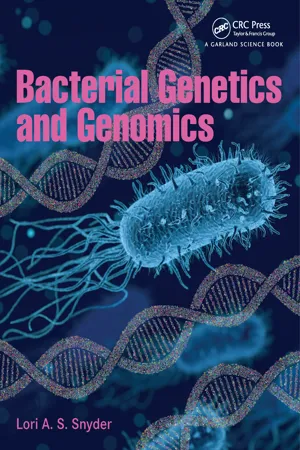
- 389 pages
- English
- ePUB (mobile friendly)
- Available on iOS & Android
Bacterial Genetics and Genomics
Lori A.S. Snyder
About This Book
Our understanding of bacterial genetics has progressed as the genomics field has advanced. Genetics and genomics complement and influence each other; they are inseparable. Under the novel insights from genetics and genomics, once-believed borders in biology start to fade: biological knowledge of the bacterial world is being viewed under a new light and concepts are being redefined. Species are difficult to delimit and relationships within and between groups of bacteria – the whole concept of a tree of life – is hotly debated when dealing with bacteria. The DNA within bacterial cells contains a variety of features and signals that influence the diversity of the microbial world. This text assumes readers have some knowledge of genetics and microbiology but acknowledges that it can be varied. Therefore, the book includes all of the information that readers need to know in order to understand the more advanced material in the book.
Frequently asked questions
Information
Table of contents
- Cover
- Half Title
- Title Page
- Copyright Page
- Contents in Brief
- Contents
- Note to Reader
- Acknowledgments
- About the Author
- Welcome to the World of Bacterial Genetics and Genomics
- Part I: DNA, Genes, and Genomes
- Part II: RNA, Transcriptional Regulation, and Transcriptomes
- Part III: Proteins, Structures, and Proteomes
- Part IV: Genetics, Genomics, and Bioinformatics
- Part V: Bacterial Response, Adaptation, and Evolution
- Part VI: Gene Analysis, Genome Analysis, and Laboratory Techniques
- Part VII: Applications of Bacterial Genetics and Genomics
- Glossary
- Glossary of Bacterial Species
- Index